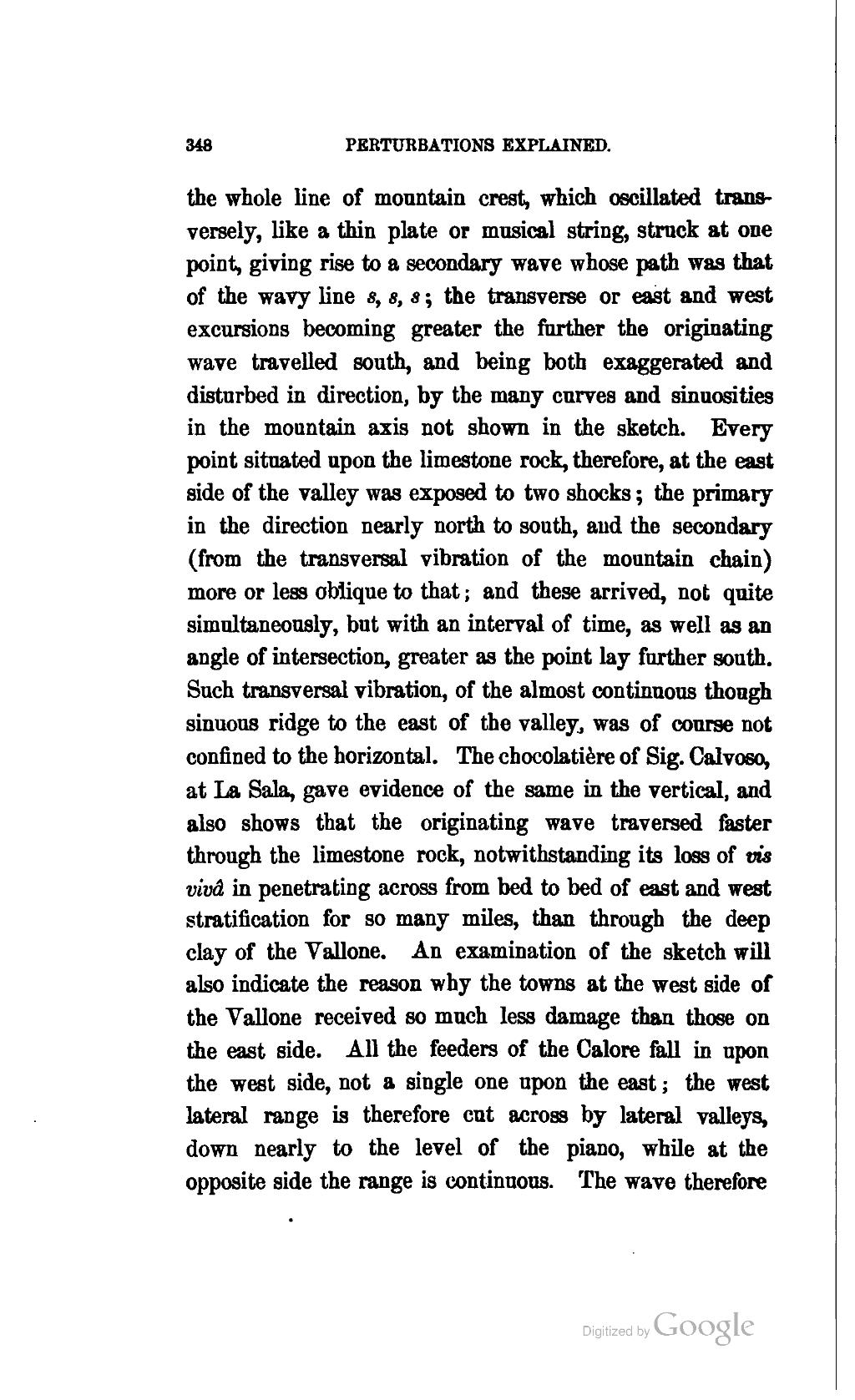the whole line of mountain crest, which oscillated transversely, like a thin plate or musical string, struck at one point, giving rise to a secondary wave whose path was that of the wavy line s, s, s; the transverse or east and west excursions becoming greater the further the originating wave travelled south, and being both exaggerated and disturbed in direction, by the many curves and sinuosities in the mountain axis not shown in the sketch. Every point situated upon the limestone rock, therefore, at the east side of the valley was exposed to two shocks; the primary in the direction nearly north to south, and the secondary (from the transversal vibration of the mountain chain) more or less oblique to that; and these arrived, not quite simultaneously, but with an interval of time, as well as an angle of intersection, greater as the point lay further south. Such traversal vibration, of the almost continuous though sinuous ridge to the east of the valley, was of course not confined to the horizontal. The chocolatière of Sig. Calvoso, at La Sala, gave evidence of the same in the vertical, and also shows that the originating wave traversed faster through the limestone rock, notwithstanding its loss of vis vivâ in penetrating across from bed to bed of east and west stratification for so many miles, than through the deep clay of the Vallone. An examination of the sketch will also indicate the reason why the towns at the west side of the Vallone received so much less damage than those on the east side. All the feeders of the Calore fall in upon the west side, not a single one upon the east; the west lateral range is therefore cut across by lateral valleys, down nearly to the level of the piano, while at the opposite side the range is continuous. The wave therefore
Page:Great Neapolitan Earthquake of 1857.djvu/434
Appearance

